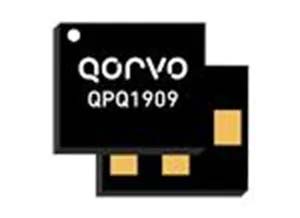Fighting for wireless bandwidth, especially in tightly packed device-filled environments such as stadiums and rallies is sketchy at best. Over-subscribed carriers are part of the problem. They just cannot provide enough raw data to so many people in real time.
But competing in the same space as some cellular bandwiths is Wi-Fi, ZigBee, Bluetooth®, DECT, HAL, and several other protocols we may be aware of. All sharing RF space, all using different modulation schemes, channel widths, channel spacings, and frequency-hopping algorithms.
As next-generation services and devices emerge, more frequencies, bandwidth, coexistance, and interference immunity is needed. This means claiming more of the spectrum that was lost using older technologies. Read on to learn how Bulk Acoustic Wave (BAW) technology offers a promising solution to maximize spectrum utilization by supporting more precision filtering to recover stronger, more reliable signals with greater noise immunity.
Maximizing Spectrum Utilization
Spectrum utilization is the key, and while the move from 3G to 4G increased from 5 bands to 20 bands, soon 40 4G bands will be up for grabs─all trying to recover clean signals from a world of muddying interference.
In other words, reaching deep into a turbulent pool of RF, more precision filtering is needed to recover stronger and more reliable signals with improved noise immunity. And with handheld devices that feature multi-protocol transceivers that can operate simultaneously, the need for 40 filters is not uncommon.
Even within a home setting, Wi-Fi routers suffer and end-point devices fall victim here as well. More reliable data, more throughput, fewer retries, more effective range, more simultaneous channels, and so on. A wireless battle is going on.
Improving Performance Through Precision Filitering
Key to improving performance are filters, but, older space-eating Surface Accoustic Wave (SAW) filter technologies are reaching a brick wall as far as being effective solutions to the doubling of RF bands we will see in the near future.
Supplanting SAW filters is BAW technology. This technology can handle higher power levels than surface accoustic wave devices. Electric current distrubutes more freely and there are no narrow channels of fingers prone to electromigration damage as in SAW filters. Bulk filters have been used to partition the bands and are proving a more reliable bandwidth within band. Bulk Accoustic Wave technology extends the edges of the filters while maintaining sharp band edges.
Both are forms of electromechanical resonators. Bulk Accoustic Wave filters, which can be made using crystal quartz, can be 1000 times smaller than ceramic technologies while retaining low cost at high-volume manfacturing. As this technology supplants older Surface Accoutstic Wave solutions, the tightly packed bulk filters can allow smaller, more clever use of specific bands and power levels to set up a next-generation band-sharing technique.
New Ways of Partitioning
With more filters exhibiting higher power levels taking up less space, device-specific, and even protocol-specific partitioning of the air waves can take place. Aditionally, design engineers can classify power levels of criticality, throughput, or other importance so that channel assignments for noncritical transmissions avoid these channels.
For example, a high-speed streaming multimedia link has higher bandwidth needs than SMS texting services. An interruption in the streaming could be a turnoff if not enough bandwidth or buffering is used. Seconds of delay in SMS services would not even be noticed.
By the same token, newly emerging medical devices connected to the Internet of Things could use specific subsets of the newly evolved bandwidth to assure the most reliability while monitoring a patient, or, transferring error-free vitals. Even assigned fallback channels can be used to increase reliability.
Where to Begin
Those pioneering the technology usually have a lot to say. In this case, check out what Qorvo is introducing. Qorvo BAW filters range from 1.5GHz to 9GHz, encompassing the consumer wireless bands as well as carrier services. Parts such as the QPQ1909SR perform signal-conditioning filtration within the 2402MHz to 2494MHz bands for Wi-Fi bandage (Figure 1). Terminating into 50Ω, the low 0.8db to 1.2db insertion loss is important for maintaining signal integrity.

Figure 1: Packing multiple high-performance RF front-end filters in smaller space while improving performance lets hexaplexers such as this multiband filter provide superior performance in smaller designs. (Source: Qorvo)
But while many are unfamiliar with how to design with BAW, aids are available to guide you through the journey. Take for example the QPQ1909EVB01 Active Filter Development Tools Evaluation Board Kit. This uses the high-performance high-power edge boost Wi-Fi technology for channels 1 through 14. This means end users will see a better quality of service as well as higher regulatory power allowances (to 30dBm averaged input power). Note how the higher performance channels in conjunction with a priority scheme can ensure more reliable data communications to more critical applications.
And don’t just think of BAW as a better Wi-Fi solution. Other BAW technologies from Qorvo are useful for GPS, DiPlexors, Duplexors, and other assorted protocol-specific access points, routers, gateways, and wearables. If you are going to filter, do it in bulk.
Conclusion
With the introduction of next-generation services and devices, more frequencies, bandwidth, coexistance, and interference immunity are required. As a result, design engineers must maximize spectrum utilitazation. BAW technology and filters enable the partitioning of frequency bands for more precision filtering to capture stronger and more reliable signals with enhanced noise immunity.
